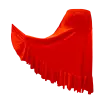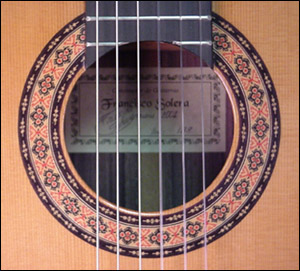Description
Jorge Cardoso is a recognized performer who has travelled the world over giving hundreds or concerts as a soloist, in duos, and with orchestras. There are innumerable recordings of his performances, and he is a prolific composer whose works have been recorded by other guitarists in more than thirty albums. Cardoso is also a master teacher with followers around the world.
This DVD traces the historical path of the guitar, showing the instrument's ancestors and tracing its development to its current form. It includes a visit to the workshops of Manuel Contreras II and Ars Antiqva, Jose Angel Espejo's workshop, followed by a detailed analysis of the factors that contribute to the proper development of classical guitar technique. The DVD covers everything from the seat, the position of the body, and the devices used to improve it “Aguado's machine”, Sor's support system, the foot-rest, attachments, and an ingenious, simple and practical system created by the author, to the mechanical workings of the hand, its main ways of gripping, and the problems posed by the ring finger. All of these topics are approached through the scientific reasoning of the author, backed up by his knowledge as a doctor.
As Jorge Cardoso says in the introduction, this course “can be useful both to beginners and to more advanced players. . . it can be useful to anyone who plays a plucked stringed instrument.” It includes basic demonstrations and explanations about how the hands work from the moment they are placed on the guitar, as well as exercises and concert pieces of the highest level. There is a discussion of strumming technique, of “toque mixto” and four complete pieces interpreted by the author. The course will also be useful for electric guitarists and others who have focused on the use of the pick and have neglected other essential guitar techniques.
120 minutes
5 Languajes: Spanish, English, French, German and Japanese
Score booklet included (58 pages)
DVD full compatible with all countries (PAL and NTSC).
Contents of the DVD
Concert themes
Misionerita (Lucas Braulio Areco)
Performance in the Colegiata Sta. M'. A major as an homage to his teache
Milonga (Jorge Cardoso)
Jorge Cardoso's best-known work interpreted by the author himself
Vals peruano (Jorge Cardoso)
Performance of this piece from the Suite Sudamerican
Canción (Jorge Cardoso)
Piece interpreted with flamenco tremolo
Pizzicato (Mª Luisa Anido)
A virtuosic fragment from a piece by Mª Luisa Anido
Tambora
Includes a fragment from Preludio y Danza
Introduction to the guitar
The modern workshop - A visit to the workshop of M. Contreras II
Early instruments workshop - A visit to the Ars Antiqva workshop of Josd Angel Espejo.
A review of the guitar's predecessors ("Paysanos" as background music)
The "toque mixto.” A baroque five-string guitar technique with surprising results applied to the anonymous composition
"Los Impossibles"; seemingly simple but of a high technical level
The technique
Introduction
Introduction, outline of the course, general comments.
Anatomical problems of the ring finger.
The seat
Factors to keep in mind when choosing a seat.
The positions
Historic review of the ways of holding the guitar
The "máquina de Aguado" (“Aguado's machine”)
Sor's support system
Attachments and equipment
Cardoso's design
Tuning
A detailed description of the classical technique for all levels
Hand grips, placement, and positions
The main hand grips. Transverse and longitudinal positions.
Basic exercise: 12131214
Twelve patterns for the development of all the fingers
Longitudinal extension
Exercise for “stretching” the left hand
Development of sensory perception
Right hand techniques
Two fingers, dedillo, figueta and variations
Left-right combinations
Table and exercises with 12 of the possible combinations
Four-part arpeggios with preparation
Arpeggio technique with preparation to achieve tactile references
Six-part arpeggios
24 combinations of six parts
Accenting of arpeggios
Table with 32 patterns for thumb independence
Summary exercise
Studies N. 1 and N. 2 for applying arpeggio patterns
The ring finger in arpeggios
The fingerings of Merchi and others
Slurs
Table with 20 possible combinations (upward and downward)
Basic slur exercise
Use of slurs in ornamentation
Performance of measures 5 - 10 of the Suite in E minor for Lute by J. S. Bach
Incorrect slurs
Scales
Creation of patterns related to improvisation
Tremolo
Classical, flamenco and others
Strumming
Exercise for strumming patterns with clicks
Variations on Las Folías de España by François Le Cocq
Harmonics
Natural and artificial
Dampers – vibrato – bars
Transverse extension
Exercise for “opening” the left hand
Other examples
Guárdame las vacas, theme and ornamented variation
: Partita N.2, Chaconne (J. S. Bach). Arpeggio with “violin bow” pattern
Etude in E minor (F. Sor) without using the ring finger
Galop (M. Carcassi)
Preludio y Danza (Eduardo Falú)
Improvisation using thumb dedillo










































 Wholesalers/Stockists
Wholesalers/Stockists Contact
Contact









